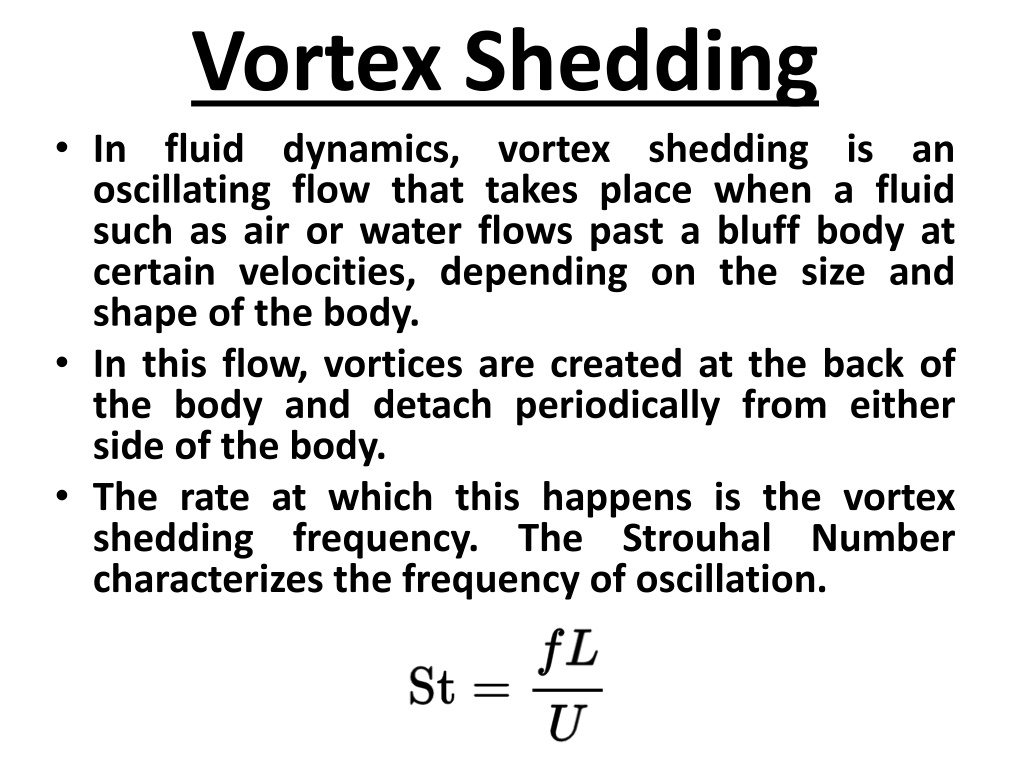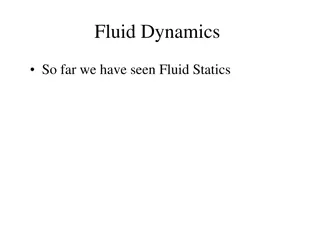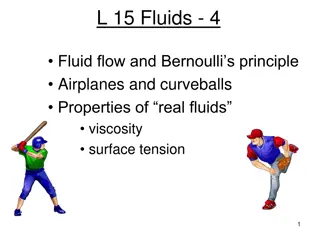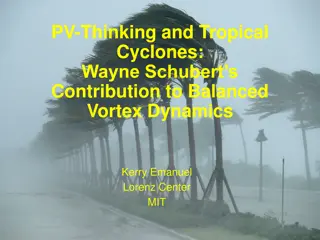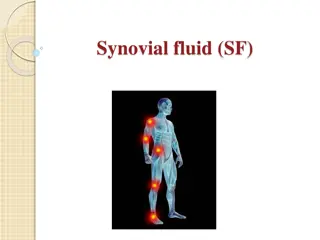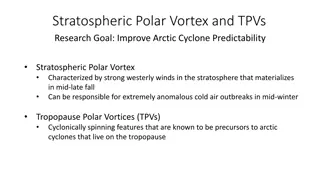Understanding Vortex Shedding in Fluid Dynamics
Vortex shedding in fluid dynamics occurs when a fluid flows past a bluff body, creating oscillating vortices at certain velocities. The two hypotheses, additional lift and absence of stall, impact our understanding of insect flight and flapping wing vehicles. While focusing on quasi-steady revolving wing aerodynamics, the classical potential flow model aids in analyzing lift coefficients at low angles of attack. These concepts are crucial for studying and designing aerodynamic systems.
Download Presentation

Please find below an Image/Link to download the presentation.
The content on the website is provided AS IS for your information and personal use only. It may not be sold, licensed, or shared on other websites without obtaining consent from the author. Download presentation by click this link. If you encounter any issues during the download, it is possible that the publisher has removed the file from their server.
E N D
Presentation Transcript
Vortex Shedding In fluid dynamics, vortex shedding is an oscillating flow that takes place when a fluid such as air or water flows past a bluff body at certain velocities, depending on the size and shape of the body. In this flow, vortices are created at the back of the body and detach periodically from either side of the body. The rate at which this happens is the vortex shedding frequency. characterizes the frequency of oscillation. The Strouhal Number
The additional lift hypothesis represents the traditional view. It presumes that an additional suction/circulation from the LEV increases the lift above that of a potential flow solution. The absence of stall hypothesis is a more recent contender that presumes that the LEV prevents stall at high angles of attack where flow separation would normally occur. represented through the so-called normal force model. This behaviour is
Given the two hypotheses above, why does it matter which is more representative of the physics if the final outcome is the same? The reason is that the role of the LEV fundamentally affects the way we understand how insect like wings at low Reynolds number work and hence our experimental approach to understanding insect flight and the design of engineered flapping wing vehicles.
While the context for the work is flapping wing aerodynamics, it is important to stress we explicitly focus here on quasi-steady revolving wing aerodynamics. It is understood that there will be unsteady effects due to stroke reversal. However, for the most important case of normal hovering with symmetric half-strokes, relatively small compared with the quasi-steady effects. these effects are
1. Potential flow mode The classical potential flow model is based on assumption of fully attached flow to the wing up to 90 degree angle of attack. In an idealized two-dimensional (2D) flow, the lift coefficient, CL, for a flat plate is expressed as: Where CLalpha,2D is the 2D aerofoil lift curve slope and alpha is the angle of attack.
The model is useful at low angles of clearly non-physical at high angles of attack approaching 90 degree, where geometry dictates that the lift must tend towards zero when the wing is perpendicular to the flow. potential flow attack, but
LEV topologies varies from a conical form with a substantial spanwise flow at the vortex core (as that observed on model hawkmoth wings at Reynolds number from 103 to 104) to a cylindrical form with a substantially weaker corewise vortex flow(as that observed on fruit fly and thrip wings at Reynolds number of the order 102 and 101]). However, these differences in the LEV flow topologies were not reflected in differences in the measured lift, suggesting that the LEV is playing an aerodynamic role that it is to some extent independent of its shape under quasi-steady conditions.
